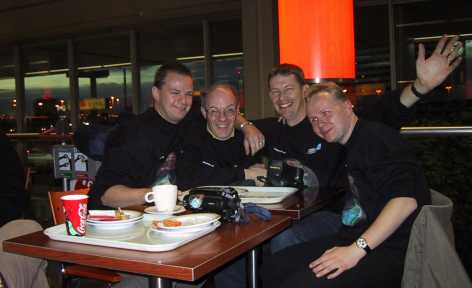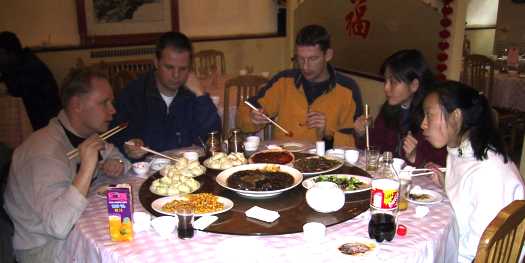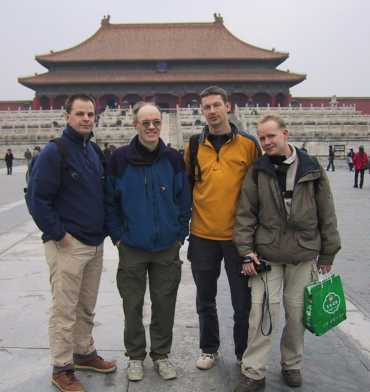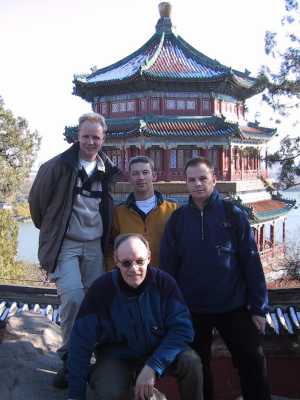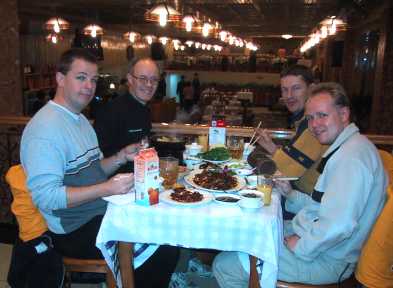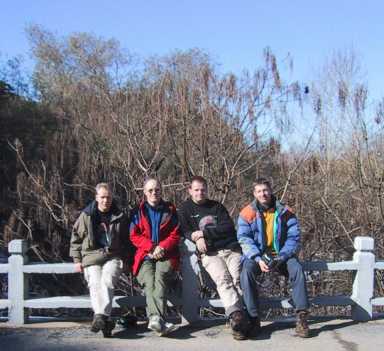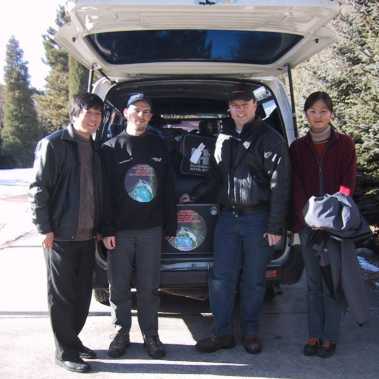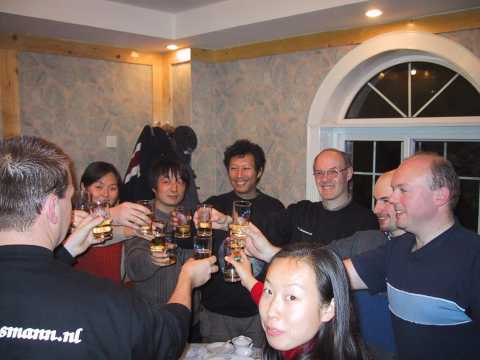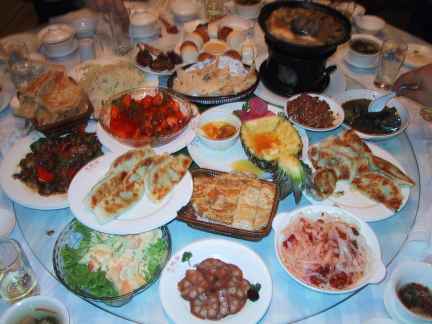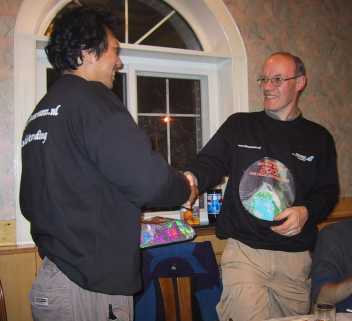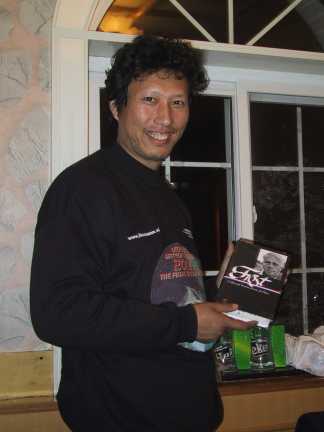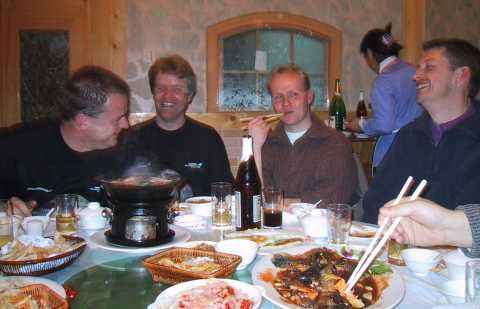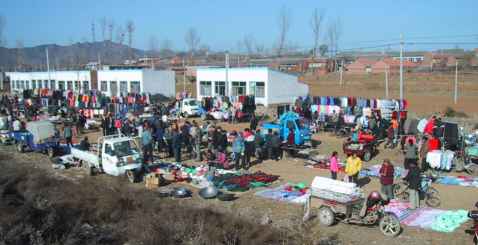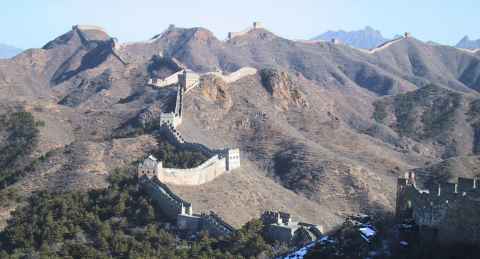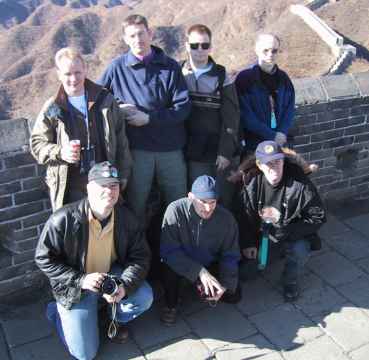by Sietse Dijkstra, Robert Haas, Casper ter Kuile, Koen Miskotte, Jos Nijland, Arnold Tukkers and Michel Vandeputte
Jin Zhu, Xiaojun Jiang, Bin Yang, Huan Meng, Dan Xia, Xuefei Gong, Haitao Chen, Min Guan, Wenzhong Liu, Jian Gao, Rui Qi, Yongming Chen
FOR JOINT RESEARCH IN 2001 and 2002
BETWEEN
NATIONAL ASTRONOMICAL OBSERVATORIES, CHINESE ACADEMY OF SCIENCES
AND
DUTCH METEOR SOCIETY
1. Name, address, telephone and faxnumber of the Dutch institute
Dutch Meteor Society (supported by Leiden University - Leidse Sterrewacht) Akker 145, NL-3732 XD De Bilt, the Netherlands Telephone +31-30-2203170 (private) +31-30-2742647 (work) Telefax +31-30-2202695 E-mail casper.ter.kuile@dmsweb.org Homepage http://www.dmsweb.org
2. Name, address, telephone and faxnumber of the Chinese institute
National Astronomical Observatories Chinese Academy of Sciences 20A Datun Road Chaoyang District Beijing 100012, P. R. CHINA. Telephone +86-10-64863042 (O) Telefax +86-10-62765031 E-mail jinzhu@bao.ac.cn Homepage http://www.bao.ac.cn/bao/index.html
3. Description of the research to be undertaken
Study of comet P/Temple-Tuttle through observation of the 2001 and 2002 Leonid meteor storm
Thirty-three years after its previous apparition, comet P/Temple-Tuttle has returned to its perihelion in 1998 and crossed the orbit of the Earth. This event was a perfect reason to initiate a cooperation between the Purple Mountain Observatories and Beijing Astronomical Observatories of the Chinese Academy of Sciences and the Dutch Meteor Society. In 1998 an expedition to the Delingha and Xinglong astronomical stations was organised to observe the expected outburst of the Leonids. During the night 16/17 November 1998 a steady stream of bright fireballs appeared which at first surprised observers around the world. After analysis it became apparent that these bright meteors are members of dust particles released by comet P/Temple-Tuttle in the year 1333. The next night the real outburst came although less pronounced as expected.
In 1999 another outburst of the Leonid meteor stream was expected which would be best observed from European areas. Again members of the Dutch Meteor Society setup an expedition to monitor this outburst by means of visual, photographic and image intensifier techniques. Now, in contrast to the 1998, a real outburst occurred and at the locations in Spain about 3500 meteors an hour were counted many of which were captured photographically from several stations and on tape with the help of image intensifier systems.
It is proposed to launch another expedition in 2001 to make again detailed observations of the structure of the comet's dust cloud via meteor observations. The observations will include countings of meteors per minute by well-trained visual observers, as well as photographic and video recordings of meteor trails from multiple sites, to determine atmospheric trajectories and heliocentric orbits of individual meteoroids. Special attention will be directed to meteors with extreme beginning heights as first observed in 1998.
The expedition will be part of a programme for co-operation between the National Astronomical Observatories which is part of the Chinese Academy of Sciences and the Dutch Meteor Society.
In 2001, alongside the expedition to China, Dutch scientists will provide guest lectures on meteor observation and data reduction techniques. Another expedition of the Dutch Meteor Society will be setup in the United States in which country another outburst will be visible caused by a second dust trail of the Leonid meteor stream. In 2002, Chinese and Dutch scientists will work together on a single location for some time to progress the joint publication of results from the 2001 expedition.
The 2001 Leonid meteor storm provides a unique opportunity to study the ejection process of dust from a comet. Since the dust particles that encounter the Earth during the storm have not been perturbed since their recent ejection from the comet, they still bear the footprints of this ejection process. With relatively simple means observations can be made which complement much more expensive missions such as the past Giotto space mission to comet P/Halley. Better understanding of the dust ejection process from comets is directly relevant to modelling the total population of comets, their mass distribution and the classification of Solar system minor bodies into asteroids and comets. Meteor storms such as produced by the Leonid meteor shower are very rare. This century, phenomena of this magnitude were observed only with certainty in 1933 and 1946 (Draconid meteor shower) and 1966, 1998, 1999 and 2000 (Leonid meteor shower). In 2002 presumable a last outburst of the Leonid meteor stream will occur but then heavy moonlicht will interfere.
Therefore the outburst in November 2001 will be the last chance to observe an outburst at its full power and this is why we are encouraged to do so by Dr. Vladimir Porubcan, President of commission 22 of the IAU and by Dr. Zdenek Ceplecha of Ondrejov Observatory of the Czech Academy of Sciences.
4. Name and particulars of the Dutch and Chinese scientist(s) to be sent to China / involved in 2001 Expedition
| Dutch scientists | Chinese scientists |
|---|---|
| C.R. ter Kuile | Jin Zhu |
| K. Miskotte | Xiaojun Jiang |
| R.R. Haas | Bin Yang |
| J.G. Nijland | Jian Gao |
| A.S. Tukkers | Min Guan |
| W.S.D. Dijkstra | Wenzhong Liu |
| M.R.A. Vandeputte |
Drs. M.J. Betlem, dr. M.C. de Lignie and Drs. B.J.M. Kokkeler will contribute substantially to the scientific work and preparation of publications.
A group of international observers at the Xinglong Station of the National Astronomical Observatories of the Chinese Academy of Sciences in China observed the Leonids on the night of 18/19 November. The Xinglong Station is located about 110 kilometers north-east of Beijing. The Leonids are dustparticles which are released while the comet 55P/Tempel-Tuttle passes the sun every 33 years. The meteors are called Leonids because they seem to emerge from the constellation of Leo.
Tonight the observers experienced a real meteor storm. That is, meteors appeared at a rate of about 40 meteors per minute at maximum. It looked like meteors where raining from the sky, and at certain moments 8 meteors appeared at the same time. It seemed to the observers as though they could really see the earth moving through space. Rates went up from 15:00 UT (Greenwich mean time) when the Leonid radiant rose above the eastern horizon. The maximum was at about 18:06 UT, and after this time rates went down slowly. Many fireballs were observed especially in the second part of the night.
The Sino-Dutch Leonid Expedition 2001 had set up 4 stations near the Xinglong area to provide multistation photography and video observations of the Leonid meteors. The aim is to compute the orbital elements of the meteoroid dust particles in space. Equipment at all stations performed flawlessly. The Sino-Dutch Leonid Expedition 2001 is a close collaboration between Chinese and Dutch astronomers to gain knowledge of the Leonid meteor stream and its
Observers include:
| Dr. Jin Zhu of the NAOC, China | Lew Gramer of NAMN, USA |
| Dr. Xiaojun Jiang of NAOC, China | Arnold Tukkers of DMS, the Netherlands |
| Bin Yang of NAOC, China | Casper ter Kuile of DMS, the Netherlands |
| Dan Xia of BMS, China | Jos Nijland of DMS, the Netherlands |
| Huan Meng of BMS, China | Koen Miskotte of DMS, the Netherlands |
| Jian Gao of BNU, China | Michel Vandeputte of VVS, Belgium |
| Min Guan of BNU, China | Robert Haas of DMS, the Netherlands |
| Rui Qi of QHU, China | Sietse Dijkstra of DMS, the Netherlands |
| Wenzhong Liu of BNU, China | |
| Xuefei Gong of BNU, China | |
| Yongming Chen of BMS, China |
References:
- Website of the International Meteor Organisation: http://www.imo.net
- Website of the Dutch Meteor Society: www.dmsweb.org
- Website of the Sino-Dutch Leonid Expedition 2001: http://vega.bac.pku.edu.cn/~zj/meteor/SDLE2001.html
Information contact:
Mr. A.S. Tukkers
Th. v.d. Borghstraat 9
NL-7591 TT Denekamp, The Netherlands
Phone: +31-541-354598 / +31-541-229700
E-mail: a.tukkers@planet.nl
